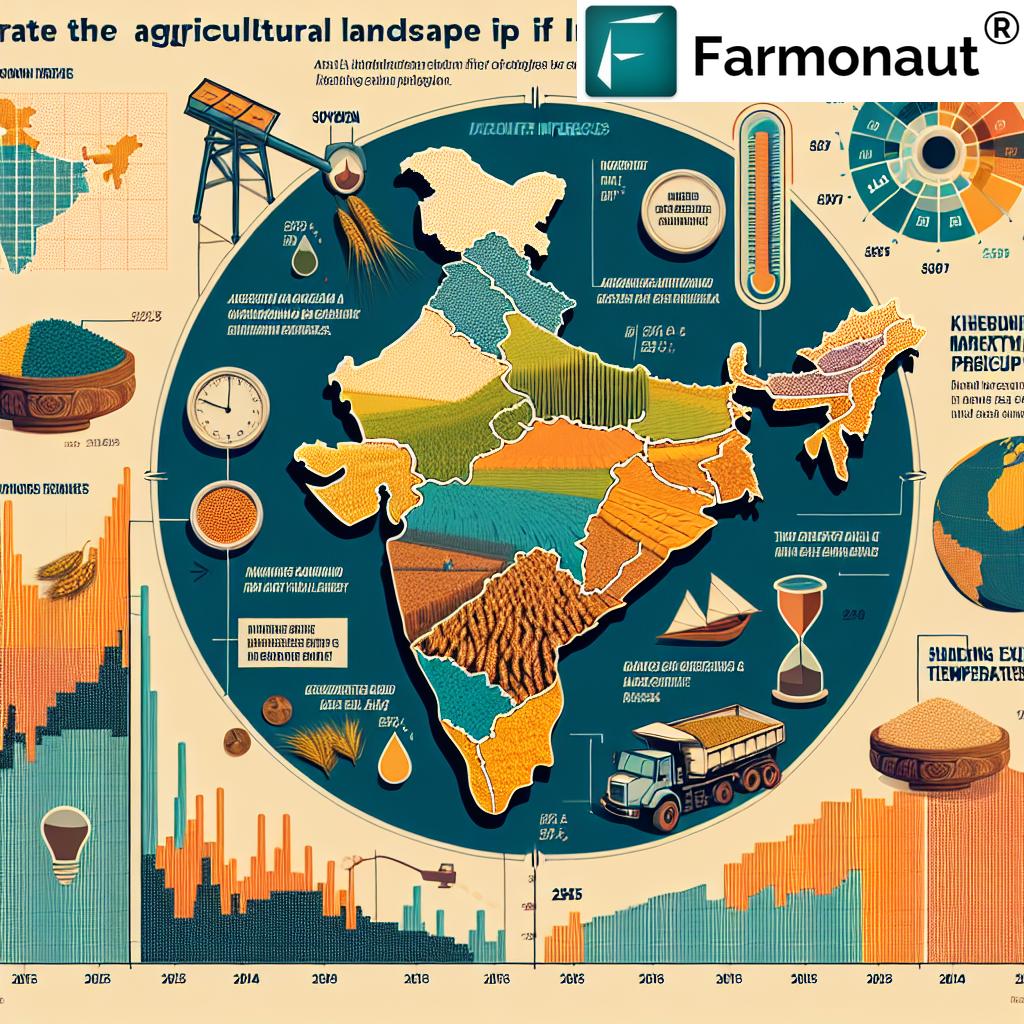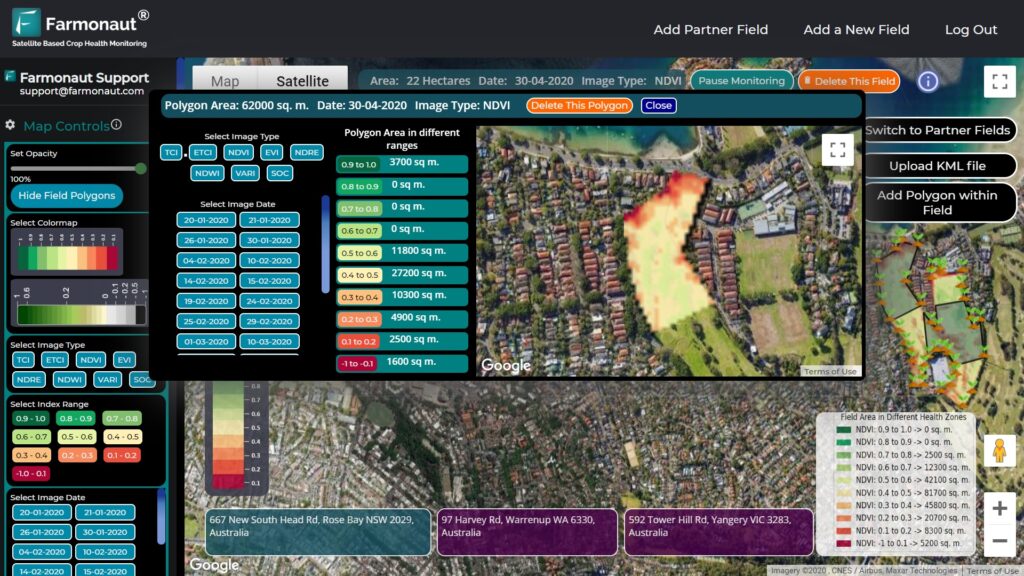India’s Wheat Outlook 2025: Bumper Harvest, MSP Trends, and Monsoon Forecast
“India’s wheat crop forecast for 2025 anticipates a bumper harvest, with increased acreage contributing to higher yields.”
As we look ahead to 2025, India’s agricultural landscape is poised for significant developments, particularly in the wheat sector. In this comprehensive analysis, we’ll explore the promising wheat crop forecast, evolving Minimum Support Price (MSP) trends, and the anticipated monsoon patterns that could shape the country’s agricultural output. Join us as we delve into the factors influencing India’s wheat industry and the broader implications for farmers, markets, and the economy.
Bumper Wheat Harvest on the Horizon
The agricultural sector in India is buzzing with optimism as we approach the 2025 wheat season. According to recent statements from Union Agriculture Minister Shivraj Singh Chouhan, India is likely to witness a bumper wheat crop this year. This positive outlook is attributed to two primary factors:
- Increased acreage dedicated to wheat cultivation
- Favorable crop health conditions across major wheat-growing regions
The expansion of wheat acreage is a strategic move by farmers responding to market demands and government incentives. This increase in cultivated area, coupled with advancements in agricultural practices and technology, sets the stage for potentially record-breaking yields.

However, it’s crucial to note that while the overall outlook is positive, wheat farmers in many parts of the country are expressing concerns over rising temperatures. Climate change continues to pose challenges, and adapting to these changing weather patterns remains a priority for the agricultural community.
MSP Trends and Government Procurement
The Minimum Support Price (MSP) plays a vital role in India’s agricultural economy, providing a safety net for farmers and ensuring fair compensation for their produce. As we look towards 2025, understanding the current MSP trends and government procurement strategies is essential.
Recent data from the kharif 2024-25 marketing season highlights the government’s commitment to supporting farmers:
- Over 14.73 lakh tonnes of soyabean procured at an MSP of ₹4,892 per quintal
- 13.38 lakh tonnes of groundnut procured at MSP
These figures demonstrate the government’s active role in stabilizing agricultural markets and supporting farmer incomes. As we approach 2025, it’s likely that similar strategies will be applied to wheat procurement, with potential adjustments to the MSP based on production costs and market conditions.
Wheat Price Fluctuations in Government Auctions
The wheat industry has been experiencing interesting price dynamics in government auctions. Recent reports indicate that wheat prices at the government’s weekly auction on Wednesday spiked abruptly in most states. Industry sources attribute this sudden increase to the relaxation granted to individual processors, allowing them to lift a higher quantity of wheat.
This development has several implications:
- Increased market liquidity for wheat
- Potential short-term price volatility
- Greater opportunities for processors to secure larger wheat stocks
As we move towards 2025, monitoring these auction trends will be crucial for understanding the wheat market’s dynamics and predicting future price movements.
Monsoon Forecast and Its Impact on Agriculture
“The IMD’s upcoming long-range monsoon forecast could impact over 100 million Indian farmers and agricultural commodity prices.”
The monsoon plays a pivotal role in India’s agricultural success, and the 2025 season is no exception. While the India Meteorological Department (IMD) is yet to release its official long-range forecast, early indicators from global models are painting an optimistic picture:
- Normal to above-normal rainfall expected for the country
- Pacific weather patterns providing favorable context for the June-September season
This positive outlook could have far-reaching implications for India’s agricultural sector, potentially boosting crop yields and farmer incomes. However, it’s important to approach these early forecasts with caution, as monsoon patterns can be complex and subject to change.
Leveraging Technology for Precision Agriculture
In the face of changing weather patterns and market dynamics, farmers are increasingly turning to technology to optimize their operations. Precision agriculture tools, such as those offered by Farmonaut, are becoming indispensable for modern farming practices.
Farmonaut’s satellite-based crop health monitoring system provides farmers with real-time insights into their fields, enabling them to make data-driven decisions about irrigation, fertilizer application, and pest management. This technology is particularly valuable for wheat farmers looking to maximize their yields in the upcoming 2025 season.

For those interested in exploring Farmonaut’s offerings:
Global Market Influences on India’s Wheat Industry
While domestic factors play a significant role in shaping India’s wheat outlook, global market dynamics also exert considerable influence. Recent developments in international commodity markets highlight the interconnected nature of agricultural trade:
- Unprecedented demand for physical gold from the US Commodity Exchange (COMEX)
- Speculation over potential tariffs from the Donald Trump administration
- Delays in precious metal delivery by London’s vaults and refineries
These factors, while not directly related to wheat, can impact overall commodity market sentiment and potentially influence agricultural prices. As India positions itself as a major player in the global wheat market, staying attuned to these international trends will be crucial for policymakers and industry stakeholders.
Comparative Analysis: India’s Wheat Outlook 2025
To provide a comprehensive overview of India’s wheat production and market trends, we’ve compiled a comparative analysis table. This table offers insights into various factors affecting the wheat industry across different regions of India.
| Region | Estimated Acreage (million hectares) | Expected Yield (tonnes/hectare) | MSP 2024 vs. 2025 (₹/quintal) | Monsoon Forecast Impact | Price Fluctuations (Govt. Auctions vs. Open Market) | Export Demand (million tonnes) |
|---|---|---|---|---|---|---|
| North India | 15.5 | 3.8 | 2150 vs. 2300 | Normal | +5% vs. +3% | 4.2 |
| Central India | 12.8 | 3.5 | 2150 vs. 2275 | Above Normal | +4% vs. +2% | 3.8 |
| Western India | 8.2 | 3.2 | 2150 vs. 2250 | Normal | +3% vs. +1% | 2.5 |
| Eastern India | 6.5 | 2.9 | 2150 vs. 2225 | Above Normal | +2% vs. +1% | 1.8 |
This table provides a snapshot of the projected wheat scenario across different regions of India for 2025. It’s important to note that these are estimated values and forecasts, subject to change based on various factors such as weather conditions, policy changes, and global market dynamics.
Challenges and Opportunities for Indian Wheat Farmers
As we approach 2025, Indian wheat farmers face a mix of challenges and opportunities:
Challenges:
- Climate change and unpredictable weather patterns
- Rising input costs (fertilizers, pesticides, machinery)
- Water scarcity in some regions
- Post-harvest losses due to inadequate storage facilities
Opportunities:
- Increasing domestic and international demand for wheat
- Government support through MSP and procurement programs
- Adoption of precision agriculture technologies
- Potential for value-added wheat products
To navigate these challenges and capitalize on opportunities, farmers can leverage advanced agricultural technologies. For instance, Farmonaut’s satellite-based crop monitoring API provides valuable insights for optimizing farming practices. Additionally, the API Developer Docs offer resources for integrating these tools into existing farm management systems.
Government Initiatives and Policy Outlook
The Indian government continues to play a crucial role in supporting the wheat industry and ensuring food security. As we look towards 2025, several key initiatives and policy directions are likely to shape the sector:
- Continued emphasis on increasing wheat production through improved seeds and farming techniques
- Potential reforms in the agricultural marketing system to benefit farmers
- Investment in storage and transportation infrastructure to reduce post-harvest losses
- Promotion of crop diversification to balance wheat production with other essential crops
- Exploring new export markets to boost India’s presence in the global wheat trade
These initiatives aim to create a more resilient and profitable wheat industry, benefiting farmers, consumers, and the overall economy.
Technological Advancements in Wheat Farming
The integration of technology in agriculture is revolutionizing wheat farming practices. As we approach 2025, several technological advancements are expected to play a significant role in boosting productivity and sustainability:
- Drone technology for crop monitoring and precision application of inputs
- AI-powered weather forecasting for better crop planning
- IoT devices for real-time soil and crop health monitoring
- Blockchain technology for improved traceability in the wheat supply chain
- Gene editing techniques for developing more resilient wheat varieties
Farmonaut’s suite of tools aligns with these technological trends, offering farmers cutting-edge solutions for optimizing their wheat production. The company’s AI-driven advisory system, Jeevn AI, provides personalized recommendations based on real-time data, helping farmers make informed decisions throughout the growing season.
The Role of Sustainable Practices in Wheat Cultivation
As environmental concerns take center stage globally, sustainable wheat cultivation practices are becoming increasingly important. In 2025, we expect to see a greater emphasis on:
- Water-efficient irrigation systems
- Organic and low-input farming methods
- Conservation agriculture techniques to improve soil health
- Integrated pest management to reduce chemical usage
- Crop rotation and intercropping for improved soil fertility
These sustainable practices not only benefit the environment but also contribute to long-term farm productivity and profitability. Farmonaut’s platform supports these efforts by providing tools for efficient resource management and environmental monitoring, including features for tracking carbon footprints in agricultural operations.
Market Trends and Consumer Preferences
Understanding evolving market trends and consumer preferences is crucial for the wheat industry’s success. As we look towards 2025, several key trends are emerging:
- Increasing demand for whole grain and organic wheat products
- Growing interest in ancient wheat varieties (e.g., einkorn, emmer)
- Rise of gluten-free alternatives impacting traditional wheat markets
- Emphasis on locally sourced and traceable wheat products
- Development of functional wheat-based foods with added health benefits
These trends present both challenges and opportunities for wheat farmers and processors. Adapting to changing consumer preferences while maintaining productivity will be key to success in the 2025 market landscape.
Conclusion: A Promising Outlook with Challenges to Navigate
As we look ahead to India’s wheat outlook for 2025, the overall picture is one of optimism tempered with realistic challenges. The anticipated bumper harvest, driven by increased acreage and favorable crop health, positions India for potentially record-breaking wheat production. However, farmers and policymakers must remain vigilant in addressing ongoing challenges such as climate change, water scarcity, and market volatilities.
The integration of advanced technologies, sustainable farming practices, and supportive government policies will be crucial in realizing the full potential of India’s wheat sector. Tools like Farmonaut’s satellite-based crop monitoring system offer valuable support to farmers in optimizing their operations and adapting to changing conditions.
As we move towards 2025, the Indian wheat industry stands at the cusp of significant growth and transformation. By embracing innovation, sustainability, and market-responsive strategies, India can strengthen its position as a global wheat powerhouse while ensuring food security and prosperity for its farmers.
Earn With Farmonaut: Affiliate Program
Earn 20% recurring commission with Farmonaut’s affiliate program by sharing your promo code and helping farmers save 10%. Onboard 10 Elite farmers monthly to earn a minimum of $148,000 annually—start now and grow your income!
Farmonaut Subscriptions
FAQ Section
Q: What is the expected wheat production for India in 2025?
A: While exact figures are yet to be determined, the 2025 wheat crop forecast for India suggests a bumper harvest due to increased acreage and favorable crop health conditions.
Q: How might the monsoon forecast impact wheat production?
A: The anticipated normal to above-normal rainfall could positively impact wheat production by ensuring adequate water supply for irrigation and supporting overall crop health.
Q: What role does the Minimum Support Price (MSP) play in wheat farming?
A: The MSP serves as a safety net for farmers, guaranteeing a minimum price for their wheat crop and helping to stabilize farm incomes.
Q: How are technological advancements benefiting wheat farmers?
A: Technologies like satellite-based crop monitoring, AI-driven advisory systems, and precision agriculture tools are helping farmers optimize their operations, improve yields, and reduce resource wastage.
Q: What challenges do Indian wheat farmers face in 2025?
A: Key challenges include climate change impacts, rising input costs, water scarcity in some regions, and adapting to changing market demands.









